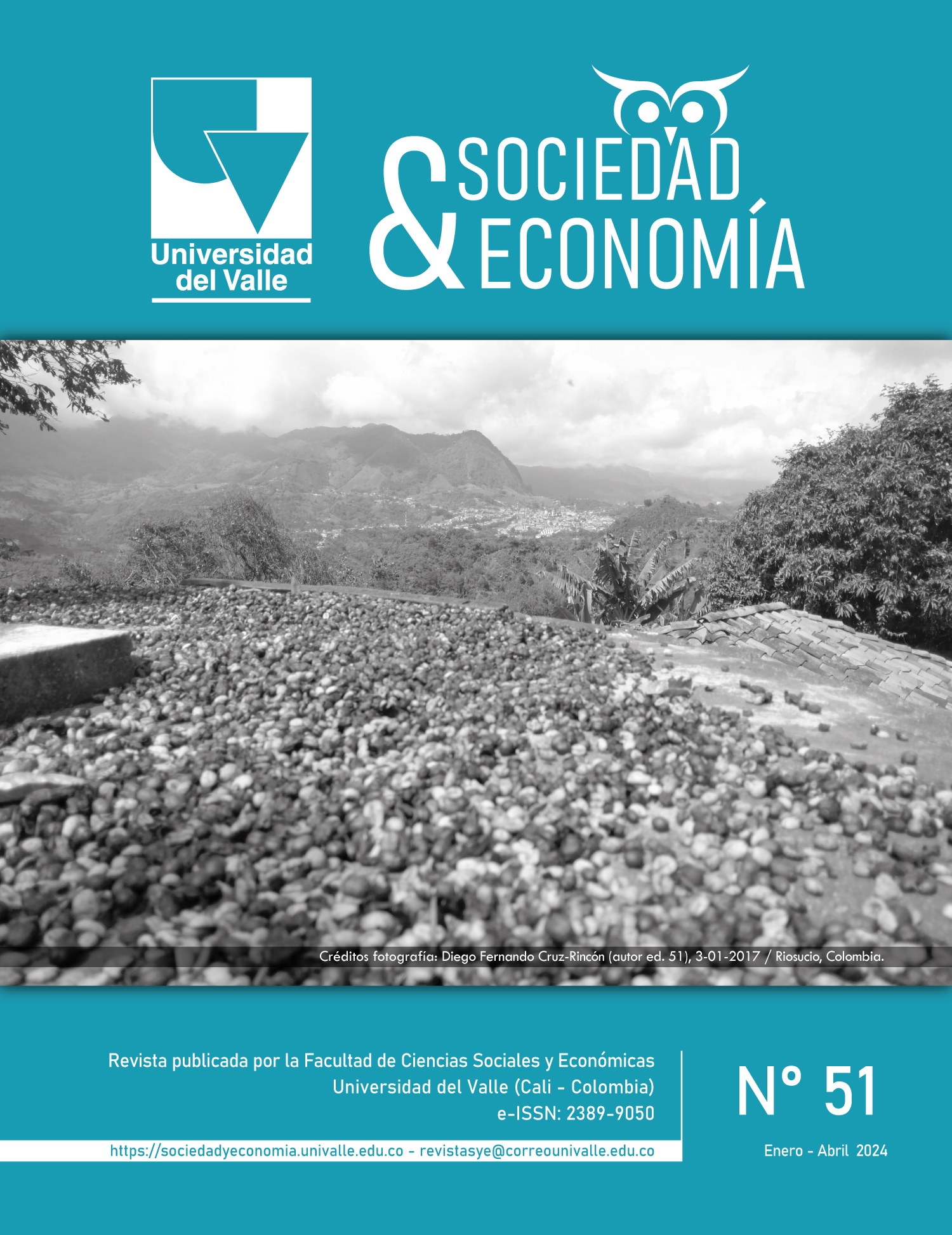Salary Returns of ESAP Public Administration Program Graduates
Keywords:
professionals, education, econometricsMain Article Content
The aim of this research is to identify the factors influencing the salary returns of Public Administration graduates from the Escuela Superior de Administración Pública (ESAP). We conducted a characterization of the labor structure using data from the 2021 Graduate Survey. This analysis is grounded in the Human Capital Theory, and the methodology extends the returns function proposed by Mincer (1974). The models we estimated reveal that higher levels of education correlate with higher average earnings. However, we also identified potential wage gaps among graduates with specializations and master’s degrees in public administration, as the latter group earns between 4% and 26% more than those with undergraduate degrees.
Ardila, K. (2013). Caracterización del mercado laboral de los graduados de la educación superior: el caso de la Pontificia Universidad Javeriana. PUJ.
Becker, G. (1975). The Human Capital. Alianza.
Ben-Porath, Y. (1967). The production of human capital and the life cycle of earnings. Journal of political economy, 75(4), 352-365. https://doi.org/10.1086/259291 DOI: https://doi.org/10.1086/259291
Carneiro, P. y Heckman, J. (2003). Human Capital. IZA. https://doi.org/10.2139/ssrn.434544 DOI: https://doi.org/10.2139/ssrn.434544
Castro, M. J. (2007). Diferencias de ingresos y retornos a la educación entre trabajadores formales e Informales en Colombia (No. 012872). Fedesarrollo. https://ideas.repec.org/p/col/000486/012872.html
DAFP –Departamento Administrativo de la Función Pública–. (2022). Decreto 473 de 2022. https://www.funcionpublica.gov.co/eva/gestornormativo/norma_pdf.php?i=184786
DANE –Departamento Administrativo Nacional de Estadística–. (2019). Informe de indicadores económicos. https://www.dane.gov.co/index.php/indicadores-economicos
Del Pilar, F. M. (2006). Determinantes del diferencial salarial por género en Colombia, 1997-2003. Revista Desarrollo y Sociedad, (58), 165-208. https://doi.org/10.13043/dys.58.5 DOI: https://doi.org/10.13043/dys.58.5
Escobar, C. y Paternina, S. (2017). Determinantes de los ingresos laborales de los economistas en Colombia para el tercer trimestre de los años 2010 y 2016 (tesis de pregrado). Universidad de Sucre, Sincelejo, Colombia. https://repositorio.unisucre.edu.co/bitstream/handle/001/631/T331.12%20E%2074.pdf?sequence=1&isAllowed=y
Fisher, I. (1906). The Nature of Capital and Income. Macmillan. https://doi.org/10.1515/9783112351369 DOI: https://doi.org/10.1515/9783112351369
Forero, N. Y. y Ramírez, M. (2008). Determinantes de los ingresos laborales de los graduados universitarios en Colombia: un análisis a partir de la Herramienta de Seguimiento a Graduados. Revista de Economía del Rosario, 11(1), 61-103. https://www.redalyc.org/pdf/5095/509555155003.pdf
Friedman, M. (1955). The role of government in education. Economics and the public interest, 2(2), 85-107. https://la.utexas.edu/users/hcleaver/330T/350kPEEFriedmanRoleOfGovttable.pdf
Gouyon, M. (2015). Revenus d’activité et niveaux de vie des professionnels de la culture. Culture chiffres, 1(1), 1-28. https://doi.org/10.3917/culc.151.0001 DOI: https://doi.org/10.3917/culc.151.0001
Hersch, J. (2007). Sex discrimination in the labor market. Foundations and Trends® in Microeconomics, 2(4), 281-361. https://doi.org/10.1561/0700000007 DOI: https://doi.org/10.1561/0700000007
Jaramillo, A., Pineda, A. G. y Correa, J. S. O. (2006). Estudios sobre egresados. La experiencia de la Universidad EAFIT. Revista Universidad EAFIT, 42(141), 111-124. https://publicaciones.eafit.edu.co/index.php/revista-universidad-eafit/article/view/818
Lewis, W. A. (1954). Economic development with unlimited supplies of labour. The Manchester School, 22(2), 139-191. https://doi.org/10.1111/j.1467-9957.1954.tb00021.x DOI: https://doi.org/10.1111/j.1467-9957.1954.tb00021.x
Londoño, J. A. (2001). Movilidad y trayectoria de los graduados de Negocios Internacionales. EAFIT. https://www.eafit.edu.co/institucional/calidad-eafit/investigacion/Documents/Movilidad%20y%20trayectoria%20laboral%20de%20los%20egresados%20de%20Negocios%20Internacionales-2001.pdf
Manco, C. C. (2016). Determinantes de la brecha salarial entre el empleo formal e informal en Colombia (tesis de pregrado). Universidad EAFIT, Medellín, Colombia. https://repository.eafit.edu.co/server/api/core/bitstreams/a551327b-ce33-4f90-8f17-de525758a63d/content
Maslow, A. H. (1958). A Dynamic Theory of Human Motivation. En C. L. Stacey y M. DeMartino (Eds.), Understanding Human Motivation (pp. 26-47) Howard Allen Publishers. https://doi.org/10.1037/11305-004 DOI: https://doi.org/10.1037/11305-004
McGregor, D. (1994). El lado humano de las organizaciones. McGraw Hill
Mincer, J. (1974). Schooling, Experience and Earnings. NBER.
Njikam, G. B. N., Mwaffo, V. F. y Tchoffo, R. M. L. (2005). Caractéristiques et déterminants de l’emploi des jeunes au Cameroun. ILO. http://oit.org/wcmsp5/groups/public/---ed_emp/---emp_elm/documents/publication/wcms_114150.pdf
Quiñones, M. y Rodríguez, J. A. (2011). Rendimiento de la educación en las regiones colombianas: un análisis usando la Descomposición Oaxaca-Blinder. Sociedad y Economía, (20), 37-68. DOI: https://doi.org/10.25100/sye.v0i20.4059
Schultz, T. (1963). The economic value of education. Columbia University Press.
Schultz, T. (1968). Returns to education in Bogotá, Colombia. McGraw Hill.
Sen, A. (1998). Capital humano y capacidad humana. Cuadernos de economía, 17(29), 67-72.
Spence, A. (1974). Market signaling: informational transfer in hiring and related screening processes. Journal of Political Economy, 84(1), 200-230. https://doi.org/10.1086/260427 DOI: https://doi.org/10.1086/260427
Suárez, G. L., Vera, J. M. y Chávez, N. M. (2020). Retornos salariales de los graduados del Programa de Economía de la Universidad Colegio Mayor de Cundinamarca. Cuadernos Latinoamericanos De Administración, 16(30), 1-20. https://doi.org/10.18270/cuaderlam.v16i30.2912 DOI: https://doi.org/10.18270/cuaderlam.v16i30.2912
Downloads

This work is licensed under a Creative Commons Attribution-NonCommercial 4.0 International License.
Revista sociedad y economía editada por la Facultad de Ciencias Sociales y Económicas de la Universidad del Valle se encuentra bajo una Licencia Internacional Creative Commons Atribución - No comercial 4.0
Basada en una obra en http://sociedadyeconomia.univalle.edu.co

